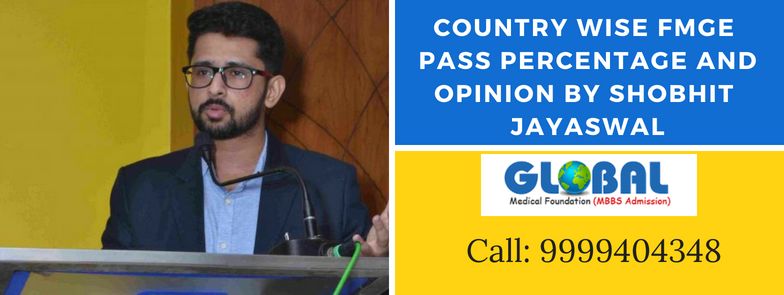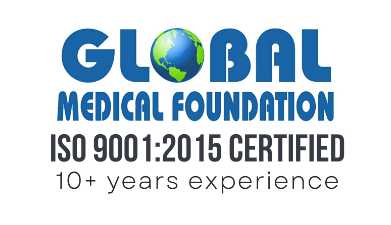MCI Screening Test Passing Percentage (FMGE Passing Percentage)
- August 16, 2018
- Posted by: Shobhit Jayaswal
- Categories: FMGE, MCI Screening Test

Foreign Graduate Medical Examination (FMGE) or MCI Screening Test as it is popularly known as is a licensing exam that Indian nationals have to write and clear in order to get a license to practice as an MBBS doctor in India. The students who study from countries such as Russia, China, Kyrgyzstan, the Philippines, China, Bangladesh, Nepal, Kazakhstan, Armenia, Belarus, Georgia, etc. have to sit for this exam. Below, you will see the country wise MCI Screening Test passing percentage.
FMGE will soon be replaced by National Exit Test (NEXT), which will be a common licensing exam for both – Indian students who study MBBS in India and Indian nationals studying MBBS in abroad.
Therefore, NEXT will serve as a common exam for all. Therefore, the students will now have to clear NEET to get admission in India or abroad and clear NEXT for practising in India.
FMGE Passing Percentage
Between 2012–13 to 2016–17, the following countries have the highest FMGE passing percentage/MCI Screening Test Passing percentage (minimum students who appeared for FMGE = 900) –
- Bangladesh
- The Philippines
- Nepal
- Kazakhstan
- Ukraine
- Russia
- China
- Kyrgyzstan
Let’s talk about the best countries individually on the basis of a few factors:
-
MBBS in Bangladesh:
Ease of getting admission: Difficult
It is not easy to get admission in Bangladesh as they will check your class 10th and 12th results. If you have the required GPA, then you can get admission. Also, you can apply only in the year of passing class 12th examination and in the next year. After that, you won’t be eligible. For this reason, Bangladesh is number one as they take the best students and also the students are fresh out of school and haven’t lost the rhythm of their studies. Adding this to the similar climate, similar study pattern and syllabus, the students generally perform well after MBBS in Bangladesh.Check MBBS in Bangladesh Eligibility
Budget: High
The budget including tuition fees+ hostel+ mess will be in excess of ₹30 lakh for most good colleges and you will have to shell out about 50% of this in the 1st year itself. Managing a budget of ₹10-15 lakh in the 1st year itself proves to be difficult.Check MBBS in Bangladesh Fee Structure
Disadvantages:
Tough to get admission
Not everyone goes there on the basis of religion
High Cost
Underdeveloped countryFMGE Passing Percentage: 27.7%
-
MBBS in the Philippines:
Ease of getting admission: Difficult
You cannot get direct admission in the Philippines for studying MBBS. The MBBS course in the Philippines is known as MD Physician. After studying class 12th and qualifying NEET, you will get admission to the BS Course. This is a pre-medical course. While studying the BS Course, you can sit for the entrance exam which is NMAT which you need to clear once. After successful completion of the BS Course and getting the required percentile in NMAT, you will get admission in the MD or MBBS course which is of 4 years. However, the quality of education is one of the best at an affordable fee for Indian students. Also, you don’t have to learn any new language and the climate is similar to that of Mumbai or Kolkata. This helps the students settle down and focus on their studies.Read Pros and Cons of MBBS in the Philippines
Budget: Medium
The budget including tuition fees+ hostel+ mess will be in around of ₹25 lakh for some colleges and goes up to ₹40 lakh. However, unlike Bangladesh, you don’t have to pay a major part of the fees in the 1st year. The fee is divided into small yearly instalments so that it is easy for the students. The fees for most colleges is fixed in pesos, therefore, the fluctuations of INR to USD won’t affect you so much.Check MBBS in the Philippines fees
FMGE Passing Percentage: 18.6%
-
MBBS in Nepal:
Ease of getting admission: Difficult
You will have to clear the entrance exams which are conducted by the top colleges in Nepal. It is not easy to clear these exams and the students have to travel to Nepal at their own expenses to sit for the exams.Budget: Very High
The budget including tuition fees+ hostel+ mess will be in excess of ₹50 lakh for most good colleges and you will have to shell out about 50% of this in the 1st year itself. Managing a budget of ₹15-20 lakh in the 1st year itself proves to be difficult.
Disadvantages:Tough to get admission
Very High Cost
Underdeveloped country
Better options available at a lower costFMGE Passing Percentage: 17.7%
-
MBBS in Ukraine:
Ease of getting admission: Easy
Getting admission in Ukraine is very easy and the visa process is also simple. Ukraine has government universities where the eligibility is 50% marks aggregate in Physics, Chemistry and Biology for most colleges and 50% marks in all subjects for some colleges. The visa process is also simple if you have all the required documents. You will get direct admission in the medical course without the need to sit for any exams like GMAT or IELTS. There won’t be any interviews too and you don’t have to learn any language before joining. However, the seats are limited and you should apply as soon as possible as the classes start in September every year. Check MBBS in Ukraine EligibilityBudget: Medium
The budget including tuition fees+ hostel+ mess will be in around of ₹25 lakh for some colleges and goes up to ₹30 lakh. However, unlike Bangladesh, you don’t have to pay a major part of the fees in the 1st year. The fee is divided into small yearly instalments so that it is easy for the students. You will get hostel facility and Indian mess too. The cost of living is low in Ukraine.Check MBBS in Ukraine Fees
Disadvantages:Different climate
Need to learn the local languageFMGE Passing Percentage: 15.3%
-
MBBS in Russia:
Ease of getting admission: Easy
Getting admission in Russia is very easy and the visa process is also simple. Russia has government universities where the eligibility is 50% or 60% marks aggregate in Physics, Chemistry and Biology for most colleges. The visa process is also simple if you have all the required documents. You will get direct admission in the medical course without the need to sit for any exams like GMAT or IELTS. There won’t be any interviews too and you don’t have to learn any language before joining. However, the seats are limited and you should apply as soon as possible as the admission closes in September every year. However, you need to be careful while selecting a university as most of them have the bilingual course.Check MBBS in Russia Universities teaching 6-year in English Medium
Budget: Medium
The budget including tuition fees+ hostel+ mess will be in around of ₹20-25 lakh for the universities recommended by the Global Medical Foundation. However, unlike Bangladesh, you don’t have to pay a major part of the fees in the 1st year. The fee is divided into small yearly instalments so that it is easy for the students. You will get hostel facility and Indian mess too. There is no big difference in the exchange rate of Indian and Russian currency which brings down the overall cost.Check MBBS in Russia Fee Structure
Disadvantages:Different climate
Need to learn the local languageFMGE Passing Percentage: 14.7%
-
MBBS in China:
Ease of getting admission: Medium
Planning to study MBBS in China is not the best choice these days. There are countries with the same duration and lower fee with a higher MCI passing percentage. It is easy to get admission in a medical university in China but it is not as easy to get admission in one of the top-ranked universities as they have their own eligibility criteria with regards to the performance of the student in class 12th. Also, the colleges in the list of 45 English teaching universities have a seat limit too. Added to this is the daunting task of learning the local language of China.
Budget: Medium to High
The budget including tuition fees+ hostel+ mess will be in around of ₹25-30 lakh for the top-ranked which are in the list of 45 English teaching universities. In the universities which are on the list of Bilingual teaching, the overall budget will be around ₹20 lakh only. Unlike Bangladesh, you don’t have to pay a major part of the fees in the 1st year. The fee is divided into small yearly instalments so that it is easy for the students.Check MBBS in China Fee Structure
Disadvantages:Different climate
Need to learn the local language
Many better options available
Difficult to get admission in top colleges and seat limitationsFMGE Passing Percentage: 14.5%
-
MBBS in Kyrgyzstan
Ease of getting admission: Very Easy
The FMGE passing percentage of Kyrgyzstan is deceptive and does not tell the true picture. There are two types of colleges in Kyrgyzstan: Low cost with low quality and medium cost with high quality. We suggest choosing the latter. Getting admission in Kyrgyzstan is very easy as the eligibility criteria are 50% aggregate in Physics, Chemistry and Biology in class 12th for general category candidates and just 40% for other category candidates. There is no entrance exam and getting a visa is easy.Check MBBS in Kyrgyzstan Duration
Budget: Low
The budget including tuition fees+ hostel+ mess will be in around of ₹17 to 20 lakh only. Kyrgyzstan has the lowest budget for MBBS in abroad. The fee is divided into yearly instalments. Also, you get FMGE coaching there from Indian teachers. The travelling cost is also very low and distance is only about 3-4 hours from India via flight.Check MBBS in Kyrgyzstan Fees
Disadvantages:Different climate
Need to learn the local languageFMGE Passing Percentage: 10.8%
From 2018 onwards, the percentage of students clearing the exit exam is expected to improve with the introduction of NEET as a qualifying base for admission in abroad. Also, soon, NEXT will be compulsory instead of FMGE.




Can anyone tell me what is the mci screening passing percentage of Anna Medical College Mauritius. Please reply
You can check the passing percentage from 2015-18 here: https://gmfadmission.in/mci-screening-test-fmge-result-2012-18/